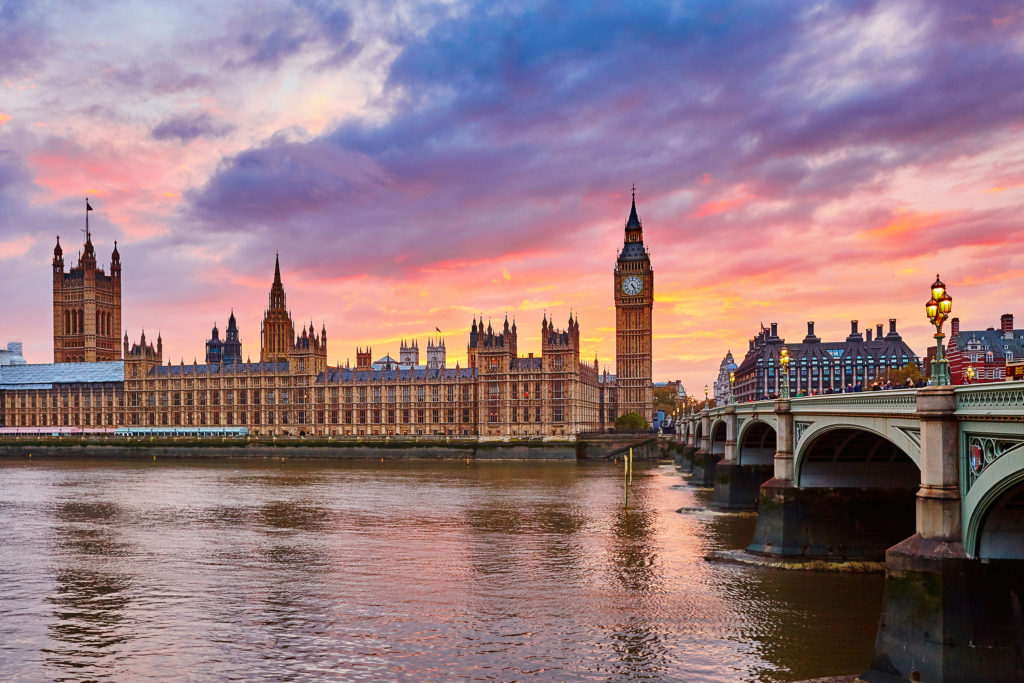Advertising is of its time and knows little of history. Yet the ads of yesteryear often provide surprising and unexpected insights into the past. Now and Then is a series that looks at the country through the lens of advertising to discover what of yesterday can be reclaimed for tomorrow. It also previews a history of the Advertising Association being written to celebrate our centenary, to be published in 2026.
This time it’s political advertising.
In contrast to the US, where it’s forecast that $12 billion – yes, billion – will be spent this year on Biden v Trump, in the UK, adspend is a drop in the Atlantic. This time round probably £50 million – yes, million – for all the parties combined; Tories, Labour, Lib-Dems, Reform and the also-rans. TV and radio ads are banned – unlike in the US – and history also tells us that advertising is by no means the game-changer for Westminster that it’s sometimes said to have been for the White House. In 1964, Daisy, a TV ad featuring a three-year-old girl threatened by nuclear Armageddon was widely credited with the Lyndon Johnson landslide.
Not to say advertising should be dismissed.
It is sometimes said that the demise of King Charles I was caused by ‘paper bullets’ – the handbills criticising his conduct that led him to the scaffold. When the franchise was spread in the nineteenth century from the monarch’s peers to middle-class and eventually working-class men, it was the newspapers that influenced the newly-literate electorate. The papers rose like a storm not long after Victoria’s birth. There, in the inky pages of The Times, the Morning Chronicle, Oracle, the Morning Herald, True Briton and more than 100 provincial newspapers, from the time of the 1832 Reform Act onwards, the electorate found both editorials and advertising soliciting their votes. By the time of the suffragette movement and the granting of votes to women, first in 1918 to those over 30, advertising had established itself as both a powerful commercial force for selling goods and services, and one to promote political ideas.
For the elections of 1929 and 1931, the Tories hired the leading agency of the day, SH Benson, to run major press and poster campaigns. In 1935, the Tories were persuaded to experiment with cinema advertising. The election result was a landslide for the Tory-led national coalition. Public opinion polls, though, were far too crude to confidently attribute cause to effect. Statistically robust studies of voting intentions were pioneered that same year in the United States by George Gallup, but were becoming essential to British marketing only after the war. It was even more difficult to isolate the part played by advertising in influencing the electorate.
Once again, though, for the 1959 election, a leading advertising agency induced the Tories to advertise. This was Colman Prentis & Varley (CPV). A two-year campaign on which almost £500,000 was spent saw a Labour poll lead of 13% evaporate. The Tories under Harold Macmillan won a third consecutive term in power. Interestingly, even the advertising industry itself questioned whether this was precisely cause and effect. Labour’s collapse also coincided with economic recovery; and 1959 was also the first British election in which television played a significant part. What few doubted was the power of CPVs slogan in encapsulating the Tories’ argument: Life’s Better Under the Conservatives. Don’t Let Labour Ruin It. Here was the lesson.
Defeat certainly forced Labour to take advertising seriously, almost for the first time. Hitherto, many in the movement – notably the father of the NHS, ‘Nye’ Bevan – had felt that it had little to no part to play in politics. It was unworthy, demeaning, to sell policies as you would Persil or baked beans. In the Swinging Sixties Labour dabbled in advertising. By the Seventies both major parties saw it as an absolute necessity.
In 1979, Labour PM Jim Callaghan defended his party’s record using the slogan, Keep Britain Labour And It Will Keep Getting Better. The Tories hired Charles and Maurice Saatchi and used an echo of 1959: Britain’s Better Off with the Tories. More memorably, they showed the dole queue at a labour exchange under the headline, Labour Isn’t Working. There were widespread strikes, high unemployment, and remarks by the PM famously glossed in The Sun as ‘Crisis? What crisis?’. This meant that the Saatchi’s poster caught the zeitgeist in the way that brilliant advertising occasionally can. None of the other campaign posters – one shown above – troubled the scorers. Mrs Thatcher’s Conservatives won a majority of 44. Saatchi’s work, like CPV’s twenty years earlier, was widely seen as pivotal.
This forced Labour to redouble its efforts. In 1985 the party set up a Campaigns and Communications Directorate, in 1994 launched the slogan New Labour, and in 1996 used as a title for its draft manifesto and advertising theme: New Labour, New Life for Britain. The brainchild of Peter Mandelson and Alastair Campbell, one with a background in TV, the other in journalism, this rebranding is widely accepted as playing a major part in the Labour landslide of 1997. Yet none of the press or poster ads stuck the deafening chord of Labour Isn’t Working.
If the six general election campaigns – the last just passed – since the Blair landslide have failed to produce any especially memorable advertising, the same cannot be said for the BREXIT campaign of 2016.
This saw the slogan used by the Leave campaign, ‘Take Back Control.’ Credited to Dominic Cummings, in January 2023 Sir Keir Starmer astutely observed, that the slogan was “Really powerful, it was like a Heineken phrase … it got into people’s heads,” and that “the control people want is control over their lives and their communities.” It was complemented by the ad on the side of the Leave campaign bus, claiming that the UK sent £350 million a week to the EU, a sum that could be better spent on the NHS. Neither verbally nor visually striking – nor even true – it nevertheless caught the public’s imagination. Whatever you think of BREXIT, it was a memorable campaign.
The other game-changer has been digital – one for this election campaign pictured – the medium not the message. In 2011 it was 0.3% of spend. In 2024 it’s likely to turn out to be a good deal more than half. Infinitely more tightly targetable than the famous political posters of the past, it’s much more drip, drip, drip than cloudburst. Not many doubt, though, that if some of it isn’t working, some of it certainly is.
Over the next few months, the analysts will get to work on the whys and wherefores of Prime Minister Keir Starmer’s victory, on the lessons learned and the mistakes to be avoided. Not least in the ad campaigns. Even if they feel all ads are equal, they’ll almost certainly conclude that some are more equal than others. The medium may have changed, but the moral from history for the political parties remains the same.
It’s simple. As some ads still hit and others still miss, hire yourself a good agency.
The Advertising Association would like to thank the History of Advertising Trust for its help in putting together this article.




